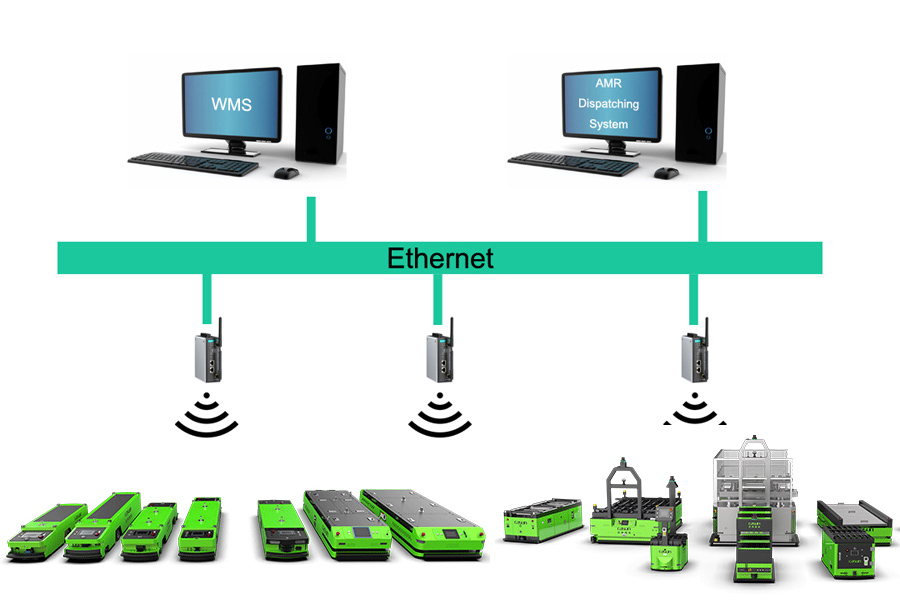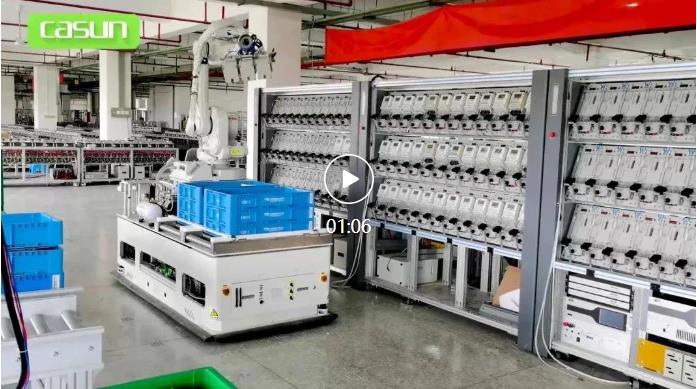Efficient, low-cost material transportation is an important measure to improve operations in many manufacturing plants and warehouses. AGV trolleys enable efficient, low-cost material transport, and in terms of safety, AGV is very safe compared to other material transport methods, especially when compared to manual handling.
One of the main advantages of AGVs is that they do not put people or infrastructure in danger. This is true, the AGV is safer than traditional manual vehicles such as conventional forklifts.
In order to make the AGV system safe, the AGV must comply with some safety rules or safety standards. In order to comply with these safety standards, the AGV must include some safety sensors and equipment to avoid or prevent risks.
Contents
What is the AGV safety standard?
Here are some key elements:
Vehicle safety and emergency control and installation
Vehicle safety and emergency control devices are devices that automatically and quickly stop propulsion, stop moving parts and brakes. The AGV should include sensors that cover the maximum moving width and/or length direction to prevent contact between the load and any obstacles.
Parking distance
The response time of the brake system and the object detection system and the safety control system will cause the structure and other installation equipment between the vehicles, including their expected loads, to be affected before the vehicle stops, and the obstacles are felt in advance to the main development direction of the moving vehicle.
Guidance system
Travel that deviates from the intended route should require an emergency stop.
AGV safety system
The safety elements of automatic guided vehicles can be divided into active safety elements and passive safety elements.
The main AGV active safety devices are:
AGV Safety Laser Scanner or AGV Collision Avoidance System Contact Buffer for Stopping AGV Emergency Stop Button Safety PLC The most important passive safety devices are: Warning Lights Audio Warning/Alarm Signals on AGV Vehicles.
AGV Safety Laser Scanner or AGV Collision Avoidance System – Active AGV Safety System
If used as the primary sensing device, the non-contact sensing device(s) should be operated and installed in it, and the fail-safe device should sense the distance between the person or the object in the path of the vehicle not less than the leading edge of the sensing field. The main movement will result in contact with the vehicle structure and people or objects before the vehicle is safely stopped.
Currently, “safety lasers” are the king of the AGV security system. There are several brands of safety lasers on the market, but they all work in the same way.
Safety lasers for the AGV industry have at least two safety areas:
The first is the “warning field” when the laser detects an obstacle in the field, the AGV decelerates.
The second and most important one is the “safe area” or “protected area”. If the laser detects certain elements in this field, the AGV will stop. This is the only area that contributes to AGV safety certification.
Both the warning field and the security field define a “safe zone”.
The design of the safe area must be based on many factors such as the surrounding area, speed, payload, and floor conditions. Each path point that the AGV passes must have its own safe area to ensure that the vehicle’s time and distance to stop will avoid any contact with obstacles.
The time (and distance) required to stop an AGV with a load of 1000 kg at 2 m/s is completely different from the time (and distance) required to stop an AGV with a load of 200 kg at 1 m/s. The inertia involved in these two cases is completely different.
Of course, in the first case, you will need a longer safety inspection area to allow the AGV to stop in time before touching the obstacle.
The AGV will continue to operate automatically after the obstacle has been removed from the “safe” area for approximately three seconds. It is automatically reared.
Other factors such as ground roughness, slope, slip surface, etc. should also be considered for the parking distance.
The AGV will constantly change its safety map while driving. The layout of the safety zone must be completed by a skilled technician at the end of the installation phase. The safety zone is designed directly from the laser manufacturer by software/tools provided by the laser manufacturer. Security system management must be independent of the AGV management system.
Safety maps must also adapt to the surrounding environment. In some cases, the security map must be modified because some elements in the path cannot be deleted and should be “ignored” to allow the AGV to continue driving. Of course, in this case, the speed and handling of the AGV must be programmed accordingly in accordance with safety standards.
Suppose you have an AGC, an automatic guided trolley that must pass underneath the cart to be hooked to a pin. In this case, the AGC must adapt the safe area to a very narrow and small, otherwise the safe area will “see” the cartwheel and identify it as an obstacle to stop the AGV. Although the safe area is small, the AGV speed must be below. Once the AGV is engaged with the cart and the safe area is out of the cart (and therefore does not “see” the wheel), the AGV can accelerate, so the safe area must be expanded.
There is an emergency stop button on each AGV.
The number and location of emergency stop buttons are determined by the shape and size of the AGV.
The emergency button must be visible, distinguishable, and easily reach the AGV from either side. No matter what happens, the operator must have access to the emergency button located on the AGV.
When the emergency button is activated, the AGV enters an emergency stop state and all motion will stop.
AGV safety PLC or relay
All of the above safety components must be managed by a safety plc or relay, and the safety plc or relay manages all equipment and ensures safe classification. Its main function is to ensure that the vehicle stops at any time.
Turning Warning light – passive AGV safety system
The AGV must have the turning warning light.
When the AGV approaches the turn, the turn light indicates that the AGV is about to turn and reminds the person in the area where the AGV is to branch to the left or right on the guiding path.
The AGV installs other types of optical signals to indicate several AGV states, stopped by the safety scanner, AGV operation, AGV problems, etc.
AGV must be visible in any direction.
Sound warning/alarm signal – passive AGV safety system
Use different tones, songs, or melodies, including confirmation and alarm tones, while the vehicle is running. The AGV emits different tones during normal operation to indicate several AGV states. The alarm tone sounds when the alarm is active.
Before initiating vehicle movement or remote reactivation from hibernation or inactivity, a warning device (turning the vehicle on or off) should be activated to make it audible, viewable, or in combination to indicate that the vehicle is under automatic control is about to start. Warning lights, such as flash or flash, should be visible at all times.
The vehicle shall provide warning instructions for sound, vision, or a combination thereof while all vehicles are in motion.
Sign – Passive AGV Safety System
The AGV must have signs and symbols indicating the hazardous area. All vehicle markings should be in accordance with local regulations and should be durable.
Complete AGV system security
AGV suppliers should follow some “rules” when installing an AGV system. In any case, it is impossible to complete all safety specifications in some cases, so each AGV project should have a “residual risk assessment” to agree between the supplier and the user.
The following are the main rules:
The minimum clearance between the obstacle and the vehicle (including the load) should be 0.5 m (19.7 in). All other areas with reduced headroom should be considered hazardous or restricted areas and clearly marked by logos, stripes, lights, or other markings.
During the design, installation, and start-up phases, users and system vendors should specify hazardous areas and/or restricted areas, and then the user is responsible for clearly identifying these areas with streaks, lights, or other markings. Avoid confusion with other marks and signs.
Areas with a headroom of less than 0.5 m to 2.1 m may pose a hazard to personnel. Before the vehicle enters the area, the vehicle speed should be reduced and an audible warning should be issued.
If the pedestrian has an escape route, the maximum travel speed should be limited to 0.3 m/s and the vehicle path should be considered a danger zone.
If the pedestrian does not have an escape route, the vehicle path should be considered a restricted zone. Users and system suppliers should agree on appropriate protection measures in this regard. If an emergency stop can be installed, it should be installed on a vehicle within 600 mm of the driver’s reach. If emergency parking devices (such as forklift trucks that store goods in reverse) cannot be reached, verifiable training should be provided to the user.

